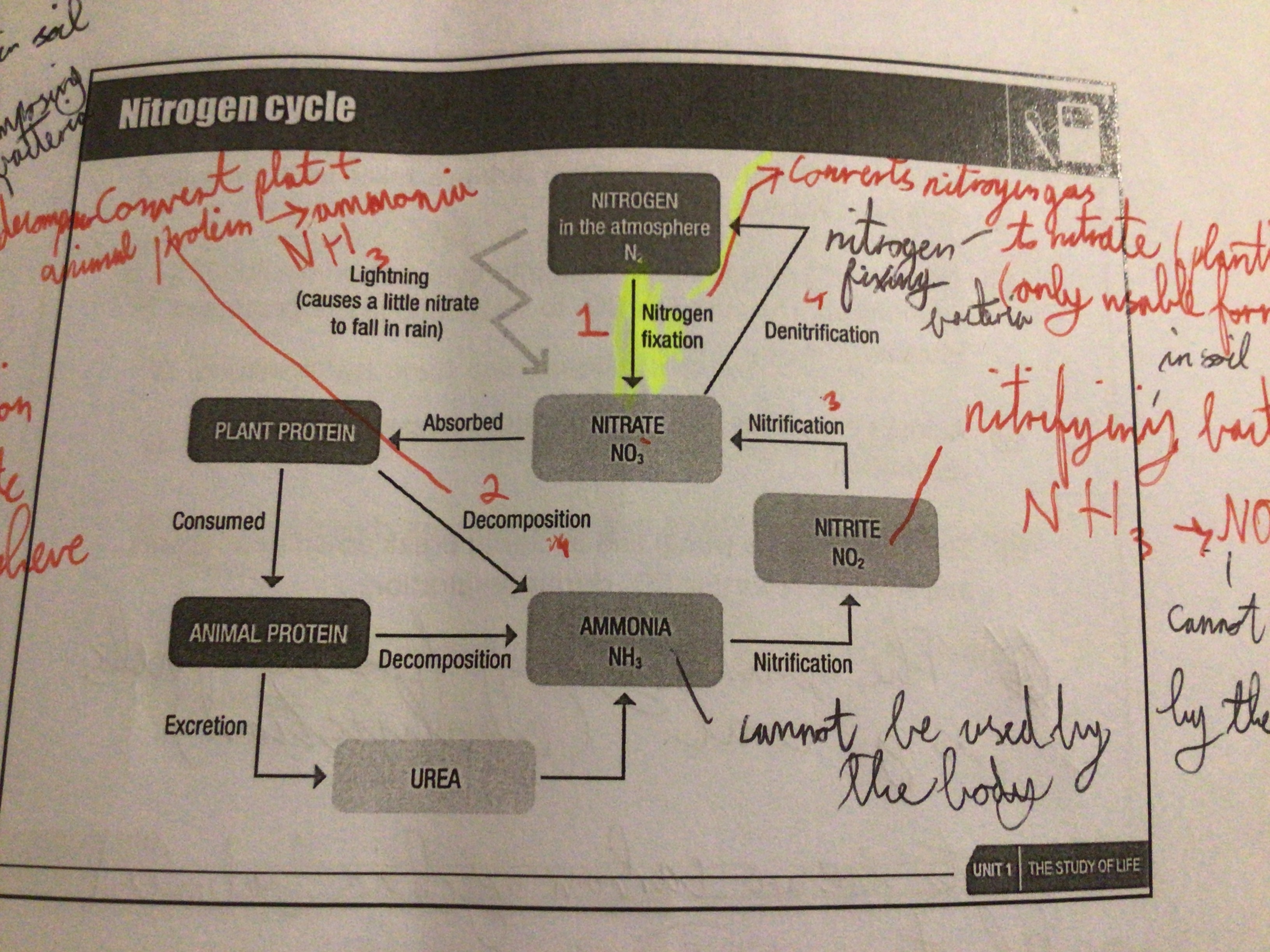Introduction to ecology
1/57
There's no tags or description
Looks like no tags are added yet.
Name | Mastery | Learn | Test | Matching | Spaced |
|---|
No study sessions yet.
58 Terms
Ecology (definition)
The study of the interaction between groups of organisms and their environment
Biosphere (definition)
The part of the earth and its atmosphere in which life can exist
Biotic (definition)
An organism’s influence on another organism
Abiotic (definition)
The influence of a non-living part of the environment on an organism
Climatic factors (definition)
The weather conditions that affect organisms in an ecosystem
Edaphic factors
Soil factors that affect organisms. E.g. soil pH, soil temperature
Aquatic factors (definition)
Factors that affect organisms that live in water
Producer (definition)
Organisms which make their own food using energy from the sun (green plants)
Consumers (definition)
Organisms that feed on other organisms
Who are producers eaten by?
Primary consumers (herbivores)
Who are primary consumers/herbivores eaten by?
Secondary consumers (carnivores)
Who can secondary consumers/carnivores be eaten by?
Tertiary consumers (top carnivores)
Food chain (definition)
The feeding relationships between organisms in which energy is transferred
Trophic level (definition)
The feeding level in a food chain
What are the two main types of food chains?
Grazing food chain. Detritus food chain
Who is the first member of a grazing food chain?
A living plant
Who is the first member of a detritus food chain?
Dead plants
What member of a food chain is at trophic level 1?
Producer
What member of a food chain is at trophic level 2?
Herbivore
What member of a food chain is at trophic level 3?
Carnivore
What member of a food chain is at trophic level 4?
Top carnivore
Name a detritus food chain
Dead oak leaves (producer) → earthworm (decomposer) → blackbird
Food web (definition)
Consists of two or more intersecting food chains
What does an ecological pyramid do?
Compare trophic levels of different communities of organisms in an ecosystem
Pyramid of numbers (definition)
Used to show the number of organisms at each trophic level of a food chain
Community (definition)
All different populations living together
Draw a usual/typical ecological pyramid (labelled + energy)
…
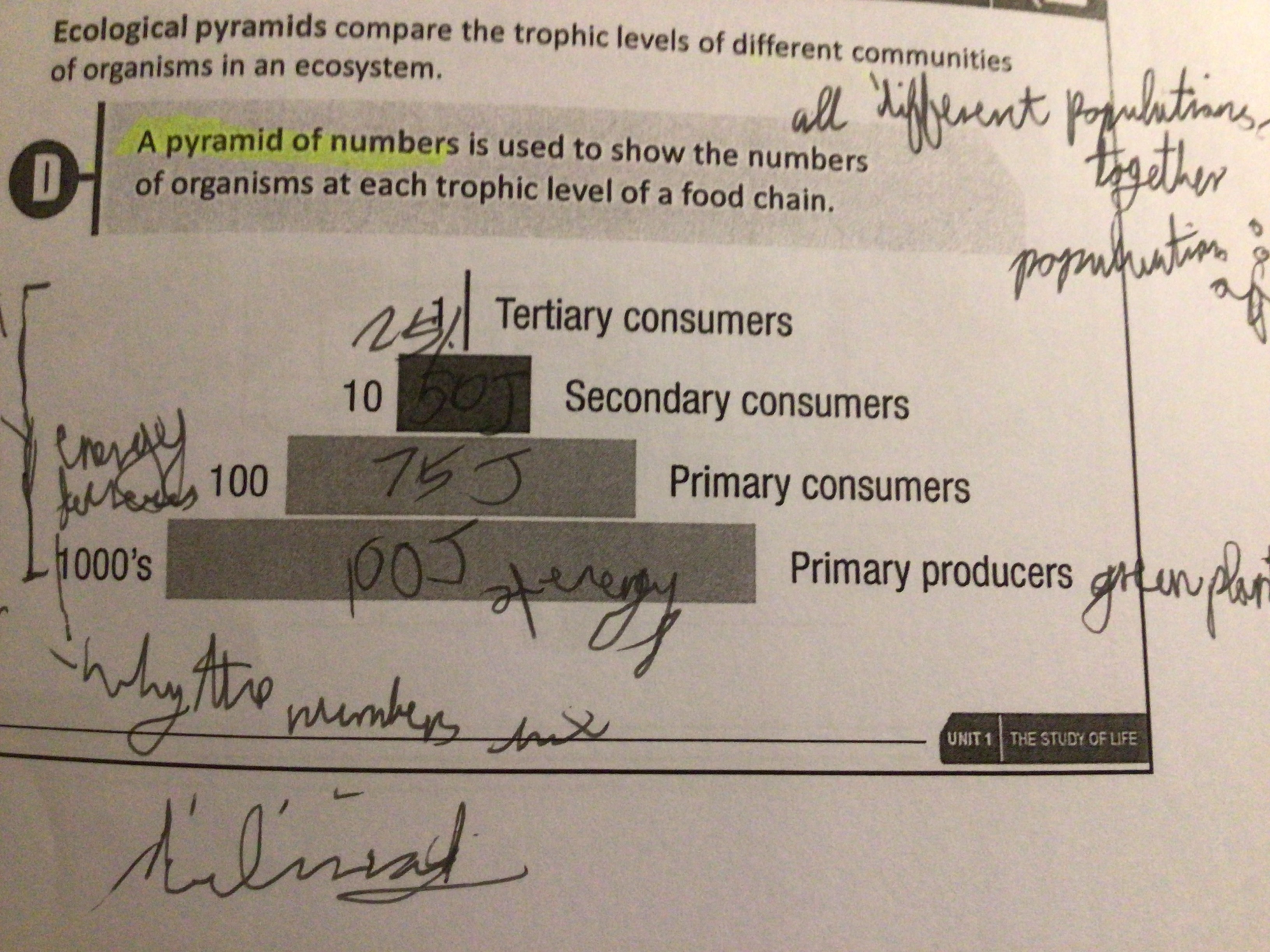
Draw a distorted ecological pyramid
…
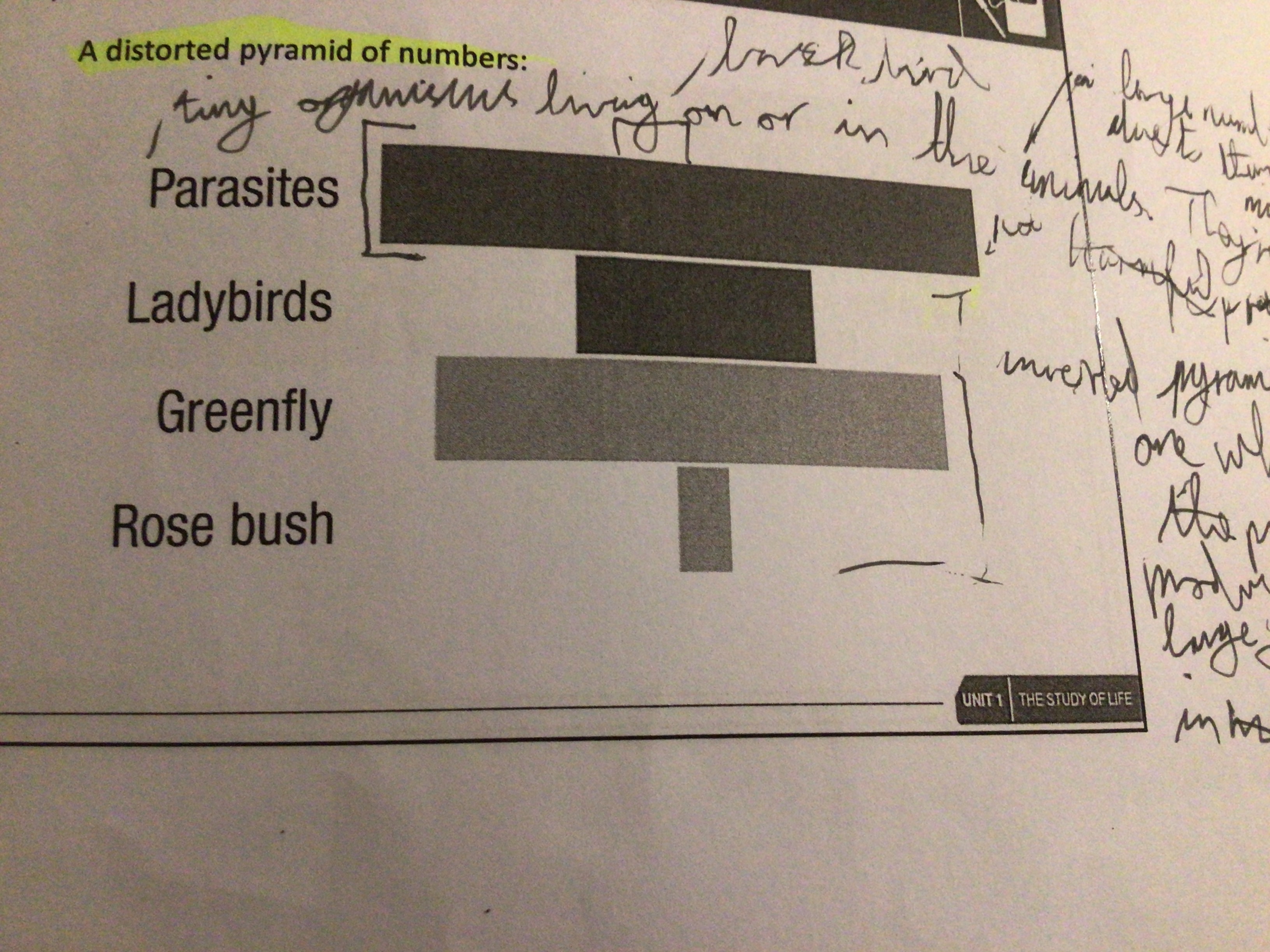
Draw an inverted pyramid of numbers (ecological pyramid)
…
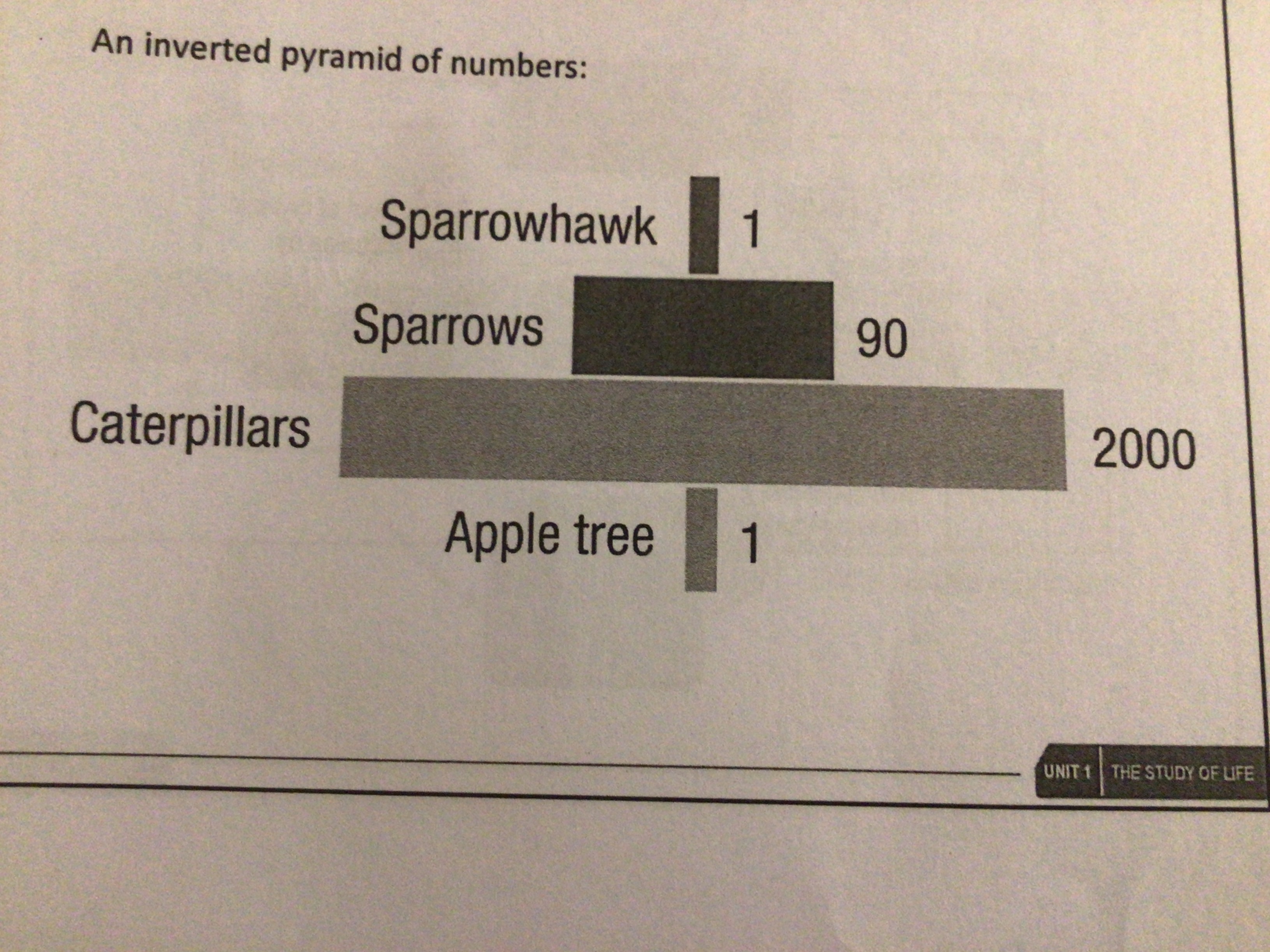
Habitat (definition)
Where an organism lives
Niche (definition)
The role of an organism in an ecosystem
What is the niche of a decomposer?
Recycle nutrients
Decomposers (definition)
Bacteria and fungi that feed on dead and decaying plants and animals
Explain how Decomposers recycle nutrients
Dead animals and plants are broken down. Minerals released pass into soil + water. Nutrients absorbed by plants and form new plant tissues. Nutrients passsed on to animals when plants are consumed
Draw a diagram of the carbon cycle
…
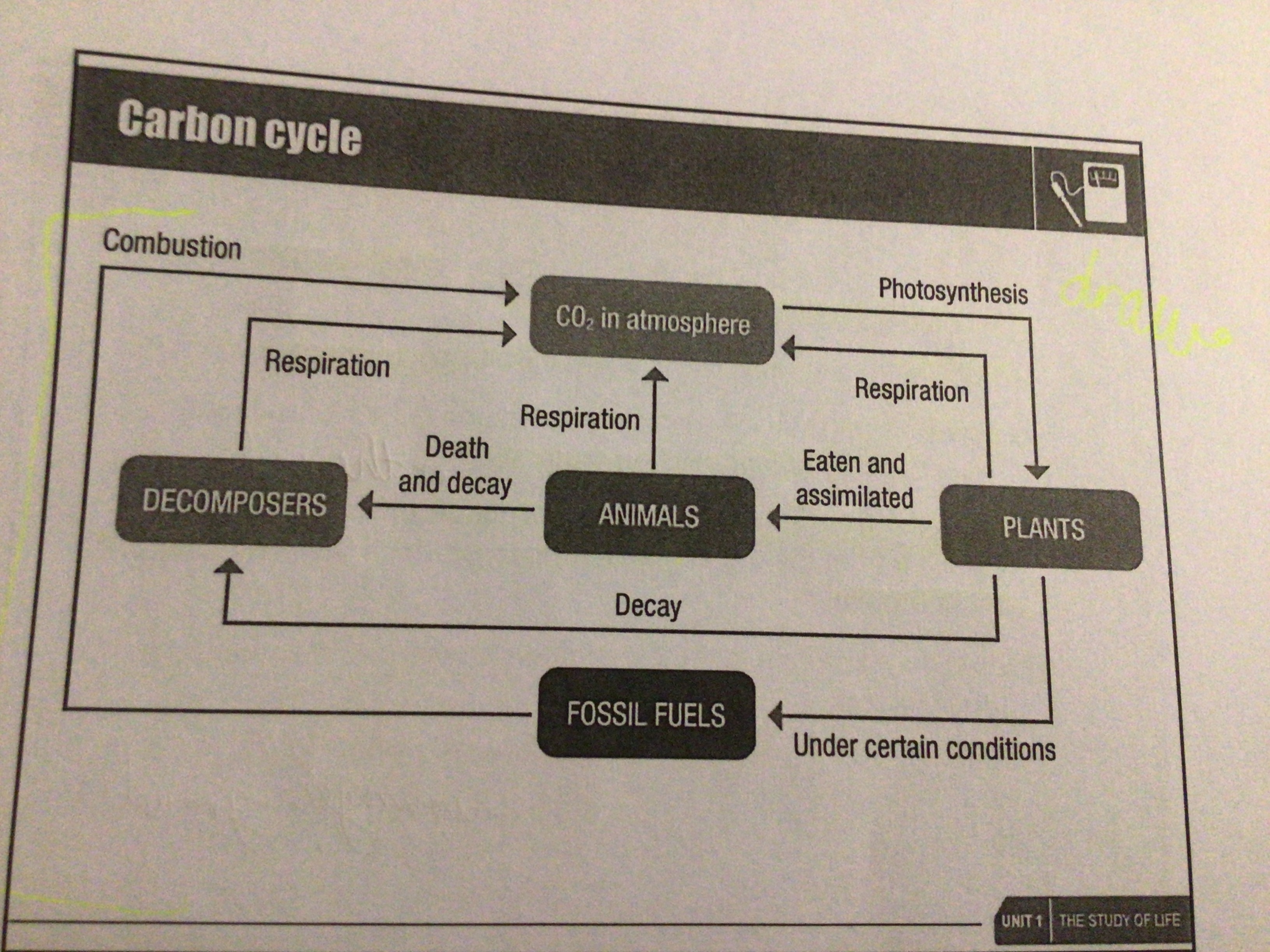
How do plants contribute to the carbon cycle?
Green plants take carbon dioxide from the atmosphere for photosynthesis. The release carbon dioxide when undergoing respiration.
How do animals contribute to the carbon cycle?
Eat plants as food, release carbon dioxide during respiration
How do Decomposers contribute to the carbon cycle?
Break down dead plants and animals. They respire and release carbon dioxide
How does the burning of fossil fuels contribute to the carbon cycle?
Combustion releases carbon dioxide e.g. coal, petrol, oil
Name two ways to ensure the carbon cycle is balanced
Plant more trees. Cut down in fossil fuels
Function of the nitrogen cycle
Allows organisms to get nitrogen in a usable form
What is the form of nitrogen that plants can absorb?
Nitrate
What plants have nodules on their roots?
Legumes
Where are nitrogen-fixing bacteria found?
Nodules on roots or soil
Function of nitrogen fixing bacteria
Converts nitrogen to nitrate ions
What do plants use nitrogen for?
Protein
What do fertilisers contain?
Nitrogen
Function of fertilisers
Encourage growth
What produces ammonia in the nitrogen cycle?
Decomposition of plants and animals. Urea
Can ammonia be used by the body?
No
What is ammonia converted to?
Nitrite
What bacteria converts ammonia to nitrite to nitrate?
Nitrifying bacteria
What is nitrite converted to by nitrifying bacteria?
Nitrate
Where is nitrifying bacteria found?
Soil
What is denitrification?
Process that returns nitrate into the atmosphere as nitrogen gas
What bacteria performs denitrification?
Denitrifying bacteria
Where is denitrifying bacteria found?
Soil
Draw a diagram of the nitrogen cycle
…
